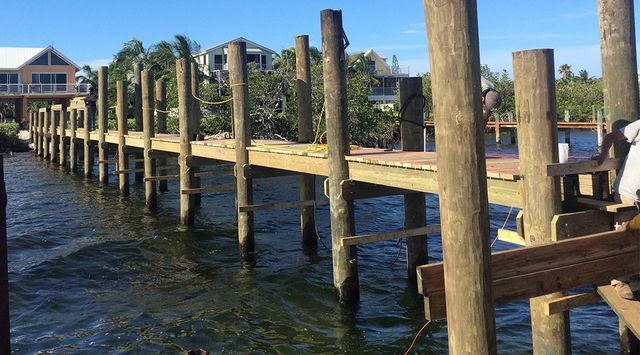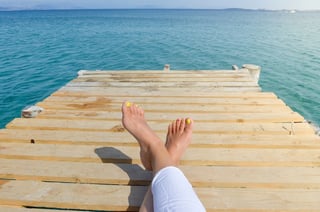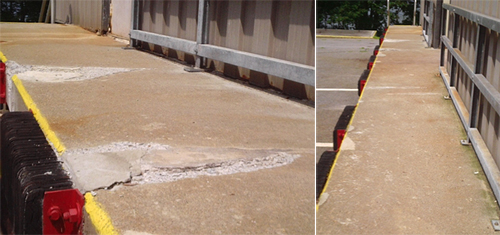Comprehending the Prices Involved in Dock Repairs
Comprehending the Prices Involved in Dock Repairs
Blog Article
Efficient Dock Fixing Techniques: Ensuring Structural Stability
Guaranteeing the architectural integrity of docks via reliable repair work techniques is critical for the durability and safety and security of marine centers. This involves a multi-faceted method starting with extensive evaluations using advanced modern technologies like finder devices and remotely ran automobiles (ROVs) to identify both noticeable and concealed problems. Ultimately, choosing the best repair products, such as corrosion-resistant alloys and composite products, is crucial for durability. Architectural reinforcement methods, consisting of the implementation of cross-bracing systems and load-distribution plates, play an important duty in mitigating anxiety points. Nonetheless, the relevance of these techniques comes to be noticeable when checking out advanced fixing techniques and preventative maintenance approaches.
Evaluating Dock Damages
Assessing dock damage is a crucial primary step in making certain the structural stability and safety and security of any docking center. This initial evaluation includes a thorough evaluation to determine both visible and covert damages. Trick elements to check out consist of the dock's foundation, pilings, outdoor decking, and hardware. Each part should be inspected for indicators of wear, rot, rust, or various other forms of destruction that could compromise the structural honesty.
Architectural engineers or certified inspectors normally perform these assessments utilizing specialized methods and devices. For instance, underwater evaluations may employ sonar tools or from another location ran cars (ROVs) to spot immersed damage. Above water, visual inspections are enhanced by making use of moisture meters and various other analysis devices to discover underlying problems not immediately noticeable to the nude eye.

Picking Repair Products
Selecting the proper repair products is a crucial action in the dock repair process, one that directly influences the durability and efficiency of the repaired structure. Material selection should be driven by variables such as environmental problems, load-bearing demands, and compatibility with existing dock parts. Wood is a traditional option for docks due to its natural strength and aesthetic charm. Selecting the best kind of wood, such as pressure-treated lumber or naturally rot-resistant species like cedar or teak wood, is vital to stand up to aquatic environments.
In enhancement to wood, composite products are progressively preferred as a result of their toughness and low maintenance requirements. Composites, usually made from a blend of plastic and timber fibers, use outstanding resistance to rot, insects, and UV damages. For steel anchors, choosing corrosion-resistant alloys such as galvanized steel or marine-grade aluminum is crucial to protect against corrosion and make sure structural integrity in saline water conditions.
Epoxy materials and marine-grade sealers are essential for repairing fractures and sealing joints, offering a waterproof obstacle and enhancing the dock's overall strength. By diligently picking premium products, dock repair work can attain lasting outcomes, thereby protecting against future destruction and ensuring risk-free, reliable usage.
Architectural Support Techniques
Effective architectural support strategies are important in making certain the stability and longevity of dock repair work. One fundamental method involves making use of steel or composite support bars (rebar) within concrete structures. Rebar gives added tensile toughness, avoiding fractures and dispersing loads extra evenly. This approach is especially reliable for anchors exposed to hefty tons or rough environmental conditions.
One more necessary method is the application of fiber-reinforced polymers (FRP) These products provide high strength-to-weight ratios and excellent resistance to corrosion, making them suitable for reinforcing concrete or wood anchors. FRP can be applied in strips or sheets and bound with epoxy materials to boost architectural stability.
Bracing and securing systems additionally play a vital duty in architectural support. Cross-bracing, making use of metal or wooden light beams, can counteract side pressures, decreasing persuading and activity. Anchoring systems, such as click here for more info helical piers or driven piles, provide a secure foundation by transferring loads to much deeper, more steady dirt layers.
Finally, the assimilation of load-distribution plates can help distribute weight much more equally across the dock's surface, mitigating localized stress and anxiety factors. These techniques collectively make sure that anchors continue to be robust and risk-free, with the ability of enduring the roughness of their functional atmosphere.
Advanced Fixing Methods

One more sophisticated method includes underwater welding, which enables for repair work to be carried out without the requirement to dewater the area. This method is particularly advantageous for dealing with structural problems in submerged dock elements, guaranteeing marginal disturbance to operations. Enhanced welding techniques, coupled with robotic systems, provide accuracy and integrity, thus prolonging the life-span of the dock.
Additionally, cathodic protection systems are executed to stop rust in metal dock frameworks. By utilizing sacrificial anodes or amazed present systems, these strategies effectively alleviate the electrochemical procedures that lead to material deterioration.
Lastly, advanced monitoring innovations, such as structural health and wellness surveillance (SHM) systems, give real-time information on the problem of dock frameworks. These systems allow proactive upkeep and timely treatments, eventually guaranteeing the long-lasting structural honesty of the dock.
Upkeep and Prevention
Maintenance and avoidance are essential concepts that underpin the longevity and safety of dock frameworks. Normal examinations are vital, enabling very early detection of wear and tear, potential weak points, and ecological impacts. An aggressive technique, including routine look for rust, rot, and structural changes, reduces pricey repair services and extends the dock's operational life.
Preventative steps need to include using protective coatings to steel parts to defend against rust and making use of treated timber to resist degeneration. In addition, ensuring correct drainage and air flow can stop water accumulation, which is a typical reason for structural destruction. Integrating top quality materials and sticking to supplier guidelines throughout building and repair phases additionally play important duties in enhancing toughness.

Educating employees in dock upkeep best methods makes certain consistent application of precautionary procedures. Leveraging technical developments, such as drones for examinations and sensing units for real-time surveillance, can further enhance maintenance efforts. By prioritizing maintenance and prevention, dock proprietors can make certain architectural honesty, functional safety and security, and cost-effective monitoring over the dock's lifespan.
Conclusion
In verdict, maintaining why not try these out the architectural honesty of aquatic facilities demands comprehensive dock repair service strategies. Advanced repair work methods, paired with regular maintenance practices, make sure the dock remains risk-free and functional under diverse environmental conditions.
Making certain the architectural integrity of docks via efficient fixing strategies is vital for the durability and safety and security of aquatic facilities.Choosing the suitable repair service materials is a critical action in the dock reconstruction process, one that directly influences the durability and efficiency of the fixed framework.Effective structural reinforcement techniques are important in guaranteeing the directory stability and longevity of dock repair services. By focusing on maintenance and avoidance, dock proprietors can make certain architectural honesty, functional security, and economical administration over the dock's life expectancy.
In final thought, keeping the architectural stability of marine facilities necessitates extensive dock repair service strategies.
Report this page